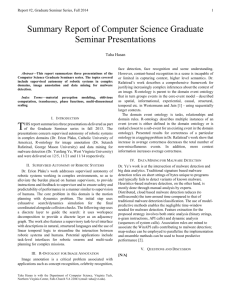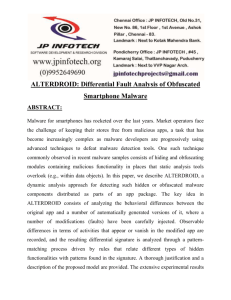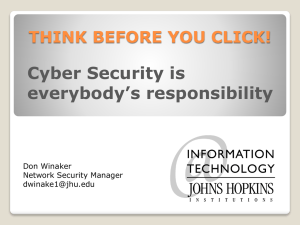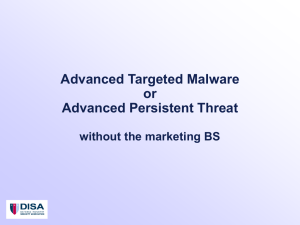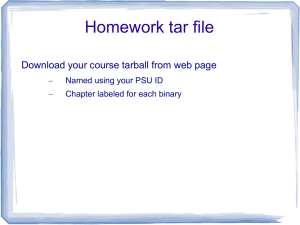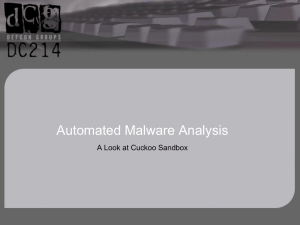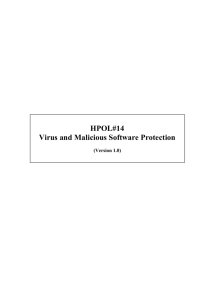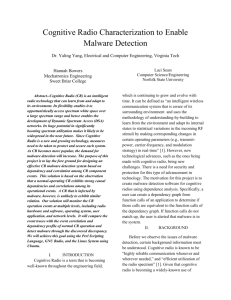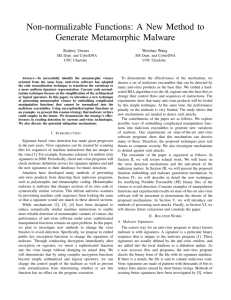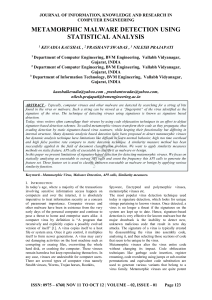- Longwood Blogs
advertisement
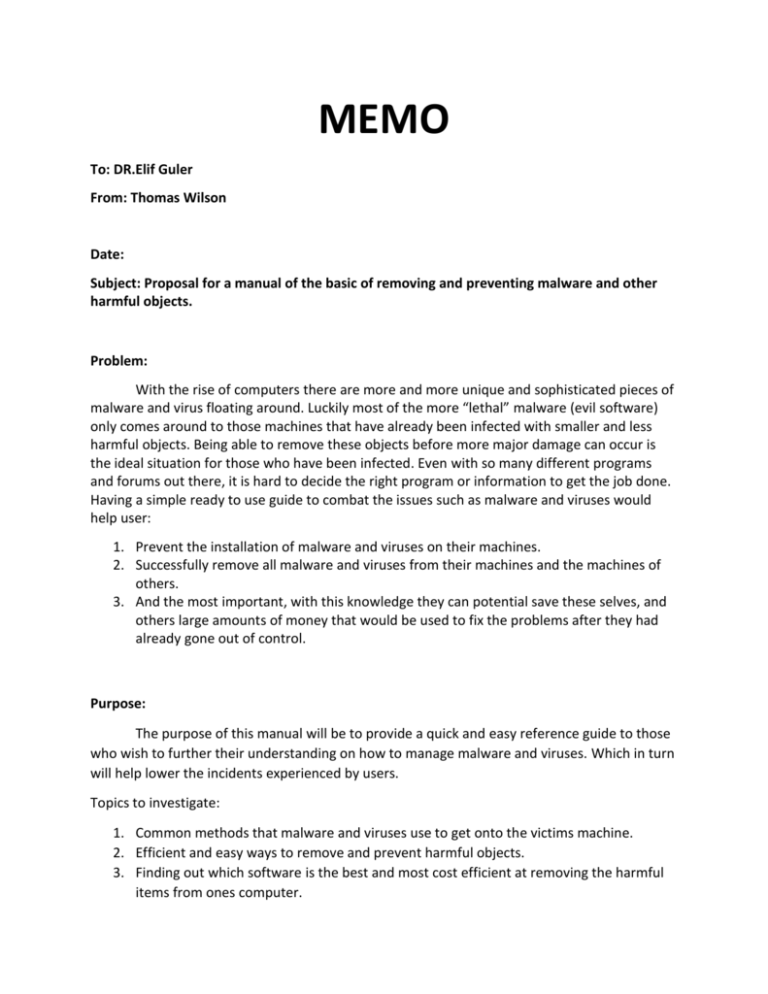
MEMO To: DR.Elif Guler From: Thomas Wilson Date: Subject: Proposal for a manual of the basic of removing and preventing malware and other harmful objects. Problem: With the rise of computers there are more and more unique and sophisticated pieces of malware and virus floating around. Luckily most of the more “lethal” malware (evil software) only comes around to those machines that have already been infected with smaller and less harmful objects. Being able to remove these objects before more major damage can occur is the ideal situation for those who have been infected. Even with so many different programs and forums out there, it is hard to decide the right program or information to get the job done. Having a simple ready to use guide to combat the issues such as malware and viruses would help user: 1. Prevent the installation of malware and viruses on their machines. 2. Successfully remove all malware and viruses from their machines and the machines of others. 3. And the most important, with this knowledge they can potential save these selves, and others large amounts of money that would be used to fix the problems after they had already gone out of control. Purpose: The purpose of this manual will be to provide a quick and easy reference guide to those who wish to further their understanding on how to manage malware and viruses. Which in turn will help lower the incidents experienced by users. Topics to investigate: 1. Common methods that malware and viruses use to get onto the victims machine. 2. Efficient and easy ways to remove and prevent harmful objects. 3. Finding out which software is the best and most cost efficient at removing the harmful items from ones computer. 4. And statistical data on the amount of money lost from malware and data on how many individuals know the basics of virus protection. Audience The primary audience will be those who have little no knowledge on this topic and wish to learn more to improve their protection. The secondary audience will be those who have prior knowledge of this topic and wish to refine their skills or check their knowledge to the information in this manual. The gatekeeper will by my teacher Dr. Guler who will be keeping a copy of this manual for grading and possible future reference for other classes. Methods As well as using my own knowledge on the topic, some of the other methods will include: 1. Looking over the advice and statistical data of the larger anti-virus and malware companies. 2. Obtaining the information on how malware comes about in one’s system and signs that it is present. 3. Learning about some of the most common malware as well as some of the most dangerous. 4. Finding out the average amount of money that is spent to combat the effects of malware and its counterparts. Using all the data collected, a convenient and informational manual that will provide its readers with the knowledge on how to handle the increasing amount of dangerous material that is trying to infect their computer. As well as providing the chance for the reader to decrease the amount of money that they might have to spend to fix an issue caused by a virus or malware. Qualifications and Feasibility I am confident in my ability to create this manual because since about 5 years ago I have be learning and improving my ability to fight against malware and its effects. In this time I have watched and listened to tech support and classes. As well as being a part of the computer science major and the cyber security minor I have worked for Dominion power on their risk management team. The risk management team was the group that dealt with the daily attacks and potential breaches that happened every day. I am currently a RTA for Longwood University so I am knowledgeable in methods for fixing these issues. Along with my prior knowledge there are plenty of trustworthy resources that can be utilized to add to the informational load of the manual. Most anti-virus/malware companies provide pages that describe the dangers of malware and how to prevent it weather in be by using their product of by informing the reader of to do it themselves. Resources Antivirus sites such as Microsoft and Kaspersky. Fellow RTAs and Computer Scientist. Online forums and question boards.


